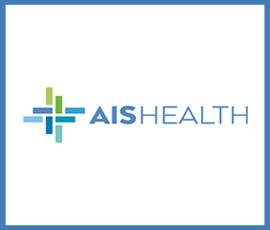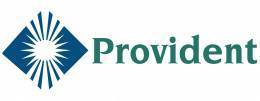2023 Outlook: With High Debt Loads, More Providers Will Be Purchased by Insurers
 Health care transactions, particularly in the provider space, appear poised for another banner year, even as inflation, rising interest rates and a possible recession slow mergers & acquisitions (M&A) across the rest of the economy. Some providers are in financial crisis and seem sure to consolidate with each other or be taken over by private equity entities, while health insurers seem poised to spend pandemic-related windfalls.
Health care transactions, particularly in the provider space, appear poised for another banner year, even as inflation, rising interest rates and a possible recession slow mergers & acquisitions (M&A) across the rest of the economy. Some providers are in financial crisis and seem sure to consolidate with each other or be taken over by private equity entities, while health insurers seem poised to spend pandemic-related windfalls.
Generally, health insurers are in good financial health. The health insurance business is somewhat protected from inflation, as carriers can pass through rising prices to commercial plan sponsors. Meanwhile, risk in government books of business is ultimately borne by the public. In addition, many carriers have plenty of cash on hand, meaning they are also insulated from rising interest rates. In spring 2020, when COVID-19 hospitalizations hit their first nationwide peak and local governments shuttered many businesses and in some cases barred nonessential medical procedures, health care utilization cratered. Utilization did not approach normal levels until the end of that year, and so premium revenues far outstripped claims paid for most insurers.
But some health care providers are in trouble. According to a Dec. 12 report from Moody’s Investors Service, “the health care [provider] sector’s credit default risk is rising” and providers’ “capital structures will become unsustainable.” The credit rating agency has assigned speculative debt grades to 80% of the provider firms it covers.
PROVIDERS HAVE HIGH DEBT LOADS, LOW REVENUE
Factors at play include “a weakening macroeconomic environment and ongoing pressure by private and public payers to reduce healthcare costs.” Per the report, many providers are highly leveraged: “Fueled by accommodative leveraged financing markets, many sponsors undertook serial debt-funded acquisitions to ‘roll-up’ small healthcare providers into large, cross-regional organizations, hoping to reap the benefits of size and scale.” In many cases, these deals were financed by private equity entities, Moody’s found; over the past decade, the health care space has seen heightened “interest and investment from private equity sponsors.”
In case studies of 13 providers that have defaulted since January 2020, Moody’s found that a combination of leverage, high capital costs and declining revenues all played a role: “Much of this excessive leverage was the result of debt incurred for leveraged buyouts or acquisition-led growth strategies. Fundamental weakness in operating performance came from a variety of sources, including technological obsolescence, increases in labor costs and skilled labor availability, changes in the business operating environment, including new regulations or simple mismanagement… disruptions caused by the onset of the COVID-19 pandemic were the last straw.”
INSURERS WILL LIKELY CONTINUE SPENDING SPREE
“For insurance, the pandemic was a windfall,” Michael Abrams, principal at Numerof & Associates, tells AIS Health, a division of MMIT. “They saved the money they didn’t spend for clinical utilization. During the bulk of the pandemic, they expected to see pent up demand that would burn it all up, and it didn’t happen. So they are sitting on piles of cash. Some of them have been using some of that cash to make acquisitions. And that is certainly going to continue, especially since at least in health care delivery, the pandemic damaged the balance sheets of a lot of organizations, even desirable ones.”
Insurers have spent billions on provider groups in the last six months, particularly home care and primary care providers. Just a few examples include CVS Health Corp.’s move to acquire home health provider Signify, Humana Inc.’s acquisition of a group of primary care clinics, and Cigna Corp.’s primary care joint venture with Walgreens Boots Alliance Inc. In addition, Bloomberg on Jan. 9 reported on rumors that CVS is close to reaching a deal to acquire Medicare-focused primary care provider Oak Street Health Inc. at a valuation of $10 billion.
Dustin Thompson, director at health care investment bank Provident Healthcare Partners LLC, tells AIS Health that insurers are “separated from the rest of the economy, although that’s probably not the best word. But basically, they’re in their own isolated bubble. They have a much longer[-term] plan than typical private equity investment, which is five to seven years.” Insurers, by contrast, are “able to realize significantly more synergies when they plug [providers] into the rest of their business model. So I think [insurers] are going to stay as active as ever.”
Insurers aren’t the only players who may strike deals with providers. Ashraf Shehata, national sector lead for health care and life sciences at KPMG, says the distressed state of provider balance sheets isn’t likely to deter investors from outside health care.
Health care “is a resilient industry,” Shehata tells AIS Health. “Even as we face a variety of challenges based on the economy, health care and life sciences are still considered safe havens during historic recession cycles.”
LARGE DEALS ARE UNLIKELY IN 2023
Thompson agrees that transactions will continue at a rapid clip. But Thompson has seen more small deals than large ones recently, and he expects that trend to continue.
“Talking about transactions in general, where you’re seeing that slowdown is in that $1 billion to $400 million transaction — that upper-middle market, because of the amount of debt that is used for those transactions,” Thompson says. “Focusing on that $50 million to $100 million transaction — we haven’t seen a slowdown in those yet. Under $50 million, those transactions are as hot as ever.”
Thompson says that the kind of scale-oriented transactions Moody’s describes have fallen out of fashion.
“There were so many platforms created in all of these sub-specialties with health care over the last few years. Those groups already have their financing lined up,” he says. Now, they have begun to focus more on delivering promised returns at the expense of acquisitions. In addition, interest rates are bringing down valuations.
“The reality is, the multiples or enterprise values of [provider assets] will just come down slightly,” Thompson explains. “The reason for that is somebody, a private equity firm or platform, might have had a 6% interest rate previously, and now they’re going to be paying 10% interest rate for [a provider asset]. So at some point, they can’t just always absorb that entire interest rate — they have to pass it along to the seller from that standpoint.”
Shehata makes a similar point.
“Many of the high-quality assets were already transacted, in a variety of deals,” Shehata says. “The ones that may be left over now, or the ones that maybe started off with higher valuations, or maybe had a bit more attrition, or they didn’t have the momentum to go full IPO — there’s a lot of factors. Some of them are running out of cash. I think there’s a lot of reasons why those assets may be on the market again.”
HOSPITAL SYSTEMS WILL HAVE TO TRANSACT TO SURVIVE
Abrams, Shehata and Thompson all agree that hospital systems — some of which are in bad financial condition due to high costs (from staffing and supply) and low volumes — are likely to be active dealmakers.
Shehata and Abrams both predict distressed regional hospital groups will transact horizontally, with Abrams calling out the combination of Atrium Health and Advocate Aurora, which was announced in December, as an example. Shehata adds that stronger systems will also likely try to acquire potentially lucrative specialty groups and bail out struggling rural hospitals.
But that sort of dealmaking may not cure what ails hospitals. Shehata points out that “if you take a strong asset and you combine it with a weak asset, that doesn’t necessarily make a strong asset.” A strong deal is “about being able to turn those assets into something that’s an extension of the health system, part of the mission,” and fits into the system’s existing geographic profile.
“If you merge two mediocre organizations, you have a bigger mediocre organization,” Abrams adds. “That’s how it really works, even though some people would like to think otherwise. I think we can expect to see more hospitals and hospital systems that are on sale at bargain prices. ’22 was one of the worst years on record for hospitals. As the pandemic relief funds may dry up, many will be looking for a buyer to help save them from closing their doors.”
Weak systems may attempt to spin off real estate assets or specialty practices to cut costs and improve liquidity, Abrams suggests, providing another potential entry point for private equity in affected markets. He thinks even large urban and suburban systems may trend in the direction of rural hospitals, which are facing declining volumes, especially in specialty care.
Abrams predicts the coming year will see “conventional health care providers using revenue maximization techniques, using industrialization of medicine, to increase their own revenue.” Given the amount of leverage across the industry, “there’s a lot of pressure to raise prices” for commercial insurers, Abrams says. “That translates to higher health care insurance premiums.”
Contact Abrams via Victoria McAlister at Victoria.mcalister@pinkston.co, Shehata via Marissa Ross at marissaross@kpmg.com and Thompson at dthompson@providenthp.com.
Written by Peter Johnson
About AIS Health
AIS Health is a publishing and information company that has served the health care industry for more than 30 years. Our mission is to provide our readers with an actionable understanding of the business of health care and pharmaceuticals. AIS Health’s in-depth writing covers the companies, people, catalysts and trends that create the richly textured contours of the health care and drug industry. AIS Health maintains journalistic independence from its parent company, MMIT. AIS Health committed to integrity in reporting and bringing transparency to health industry data. Visit AIS Health at https://aishealth.com/. External Link. Opens in new window.. External Link. Opens in new window.. External Link. Opens in new window.. External Link. Opens in new window..
.
